The theory's interesting though. You take a smartphone like an iPhone or Galaxy, running Android, both very serviceable as generic smartphones but which can't challenge the best of Nokia in terms of imaging, and strap on (or hold, freestyle, very close) this cylindrical gadget that has a larger sensor and proper 10x optical zoom, with the image data being sent backwards and forwards over Wi-fi, in real time for previewing and after capture for saving.
So, the idea then is to just take the QX-10 with you when you know you want to take some special zoomed shots and to leave it behind when 'normal' smartphone imaging will do. And, after a fashion, for very specific use cases, the system works, as you'll see below, in terms of absolute quality.

The QX-10 strapped onto a Kitkat-running Galaxy Nexus, with the Lumia 1020 trying to match it for pseudo-DSLR credibility, in the official camera 'grip'!
However:
- the QX-10's 1/2.3" (optical format) sensor is still only half the size of the 1/1.5" sensor in the Lumia 1020
- there's no flash of any kind
- it takes up to 30 seconds to get ready to take a photo (the fastest I've managed is 14 seconds)
- it takes another 6 seconds to take and save/retrieve a 5MP photo or up to 30 seconds to save a full resolution image
- focussing is often problematic, taking several taps on the phone screen to get the camera focus-locked
- the clipped on assembly feels heavy and awkward. Next to the sleek and efficient Lumia 1020, the [Galaxy+QX-10] combination is very cumbersome. See the photo below!

Of course, QX-10 advocates will point out that you don't have to strap the device to a smartphone - you can simply hold it as you wish, in any position or at any angle, to get 'creative'. Of course, one man's creative is another man's 'novelty', so as ever it depends on what you want to shoot!
But what about absolute image quality? Let's try both devices/systems with a number of test scenarios.
One complication is that of resolution and zoom. The QX-10 outputs, in 4:3 aspect ratio, at 18MP and 5MP - and, bizarrely, at 13MP and 2MP in 16:9 mode. With every photo also subject to varying degrees of optical zoom, independent of resolution, there's clearly a challenge here in trying to compare results from the QX-10 with those from the Lumia 1020. In the end, I settled for the latter at 5MP (but in 4:3 mode) and with 'zoom later' into the 34MP underlying image vying for comparison with the higher resolution shots on the Sony accessory, at least in terms of detail. Plus, obviously extra zoom where needed and appropriate.
What I've chosen to do then, is to choose my test scenarios carefully, thinking about the shot I want and the detail I'd like, and then see how easily each device/mode can accommodate me. That this will inevitably lead to some photo crop comparisons which are framed differently is something which can't really be helped.
In some cases I've been able to use our famous interactive comparator tool, so be patient while it loads and then use it with your mouse or pointer in the usual way(!)
Test 1: Sunshine, easy subject
In this case a picturesque church, lit in the winter sun. No zooming needed, no adjustments, any camera phone could nail this. Here's the full scene:

Nice and easy, here are 1:1 crops of the 1020's and the QX-10's default renderings of the scene, in a comparator (please wait for the images and code to load if you're on a slow connection):


(original image JPGs: Lumia 1020, QX-10)
There's not much in this, obviously - I prefer the Lumia 1020's colouration as it's closer to what my eyes saw, but the QX-10's default image is nicely pure and crisp, as you'd expect from a reasonable size sensor and lens in well lit conditions.
Test 2: Sunshine, zoom test
Up on the hills in the winter sun, a lovely view with some very distant (several miles) detail. The perfect opportunity to try out the QX-10's optical zoom and high native resolution. This is the archetypal test for such gear. Here's the full scene:

With very different zoom 'mechanisms' and capabilities, the detail captured will be different, of course. I'd expect the 10x optical zoom on the Sony to walk away with this test, and indeed it does. Here are 1:1 crops of central detail from the 5MP zoomed photos from the 1020 (top) and QX-10 (middle) - and then, for comparison a crop from the full (18MP) resolution zoomed shot from the QX-10 (bottom):



(original image JPGs: Lumia 1020, QX-10, QX-10 (18MP))
This is the essence of optical zoom, of course. Give it a steady hand (ideally a tripod, since the QX-10 has a tripod mount on its bottom, but I didn't bring one with me), lots of light (so the reduced aperture from the extended lens system isn't a problem) and a distant subject and then crank up the telescopic action. The 18MP 'full' resolution version doesn't, interestingly, show much more useful detail than the 5MP version - Sony's sensor should have produced better results here, though it does point to there being basic oversampling going on in the reduction to the 5MP version (in 4:3) - which is good to know.
Test 3: Fierce light extremes
Here a cottage with very bright sky and lit chimneys, yet with very dark detail in the shade. A test of dynamic range. Here's the full scene:

The photo above is from the QX-10 - the Lumia 1020 didn't deal as well with the white chimneys against the blue sky, as you'll see if you download the orginal images below (though exact exposure varies a lot depending on the precise centre of the photo and how framing was done, so I'm not going to beat up the 1020 too much here). Here are 1:1 crops of the 1020's and the QX-10's default renderings of the scene, in a comparator (please wait for the images and code to load if you're on a slow connection):
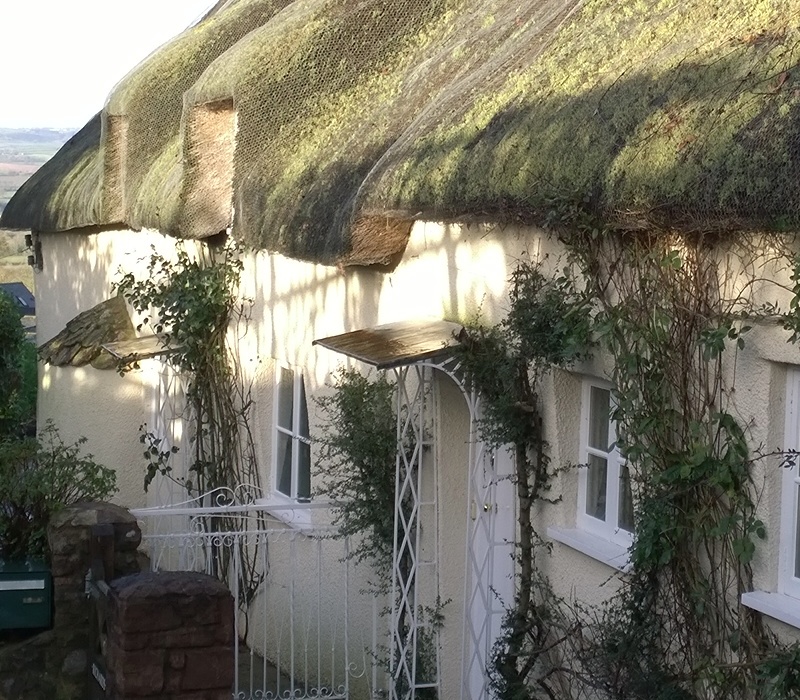
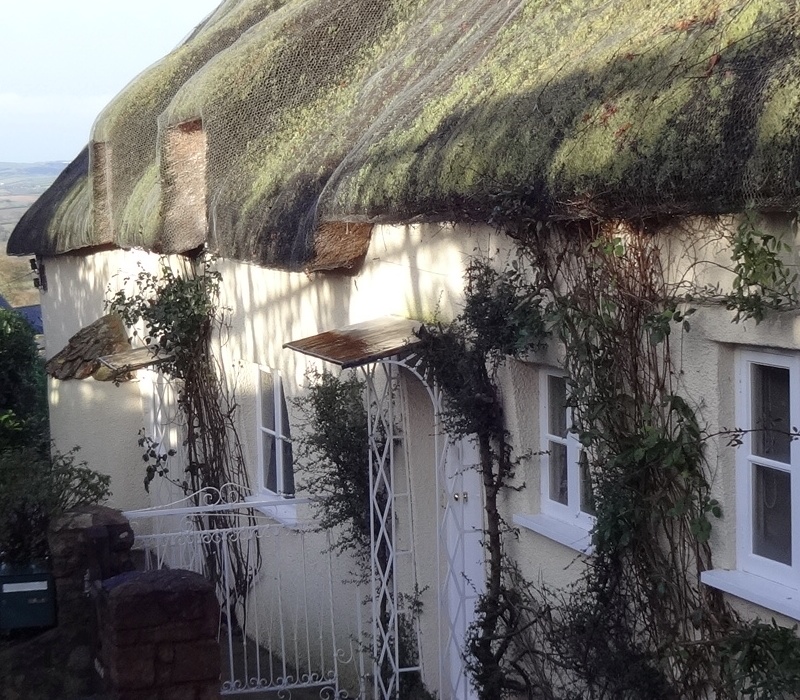
(original image JPGs: Lumia 1020, QX-10)
The Lumia 1020's image is slightly purer, better coloured and more true-to-life, but again for this sort of like-for-like shot there's very little in it overall.
Test 4: Sunny, macro
In this case some pretty lilac flowers, here's the Lumia 1020's shot:

.... and here's the QX-10's attempt:
(original image JPGs: Lumia 1020, QX-10)
The flowers, to my eyes, were very close to the 1020's rendition - the QX-10's output is repeatedly showing with 'colder' colours in these tests - and turning the lilac flowers to blue (and the earth to black) isn't a great result for this camera accessory.
Test 5: Low light, no flash
The 'no flash' requirement is a necessity, of course, since there's no way to use the QX-10 with a flash - something of a limitation for people shots indoors. However, let's test its raw low light performance and capture of the finest detail, in this case shooting a 140 year old clock in indoor lighting at the end of a living room. Here's the full scene:
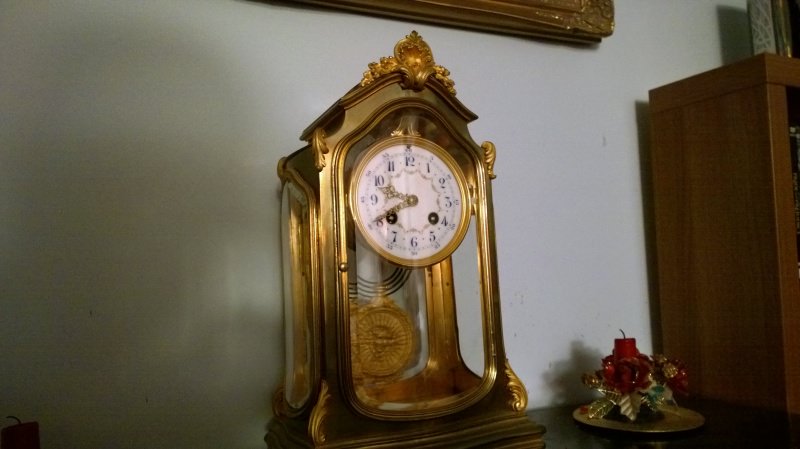
With very different zoom 'mechanisms' and capabilities, the detail captured will be different, of course. With the sunlight in the zoom test above, we saw that the 10x optical zoom on the Sony enabled it to win out hugely, but here the playing field is somewhat levelled because of the low light. With optical zoom comes a massive reduction in light ingress, which is partly why Nokia's imaging engineers decided against optical zoom for the 808 and 1020/1520, preferring a computational zoom from a full aperture and high resolution sensor.
Here are 1:1 crops of central detail from the 5MP photos from the 1020 (first) and QX-10 (second) - and then crops from zoomed versions from each device - in the case of the QX-10 (fourth, bottom), I went for a crop from the 18MP version, for absolute maximum resolved detail:
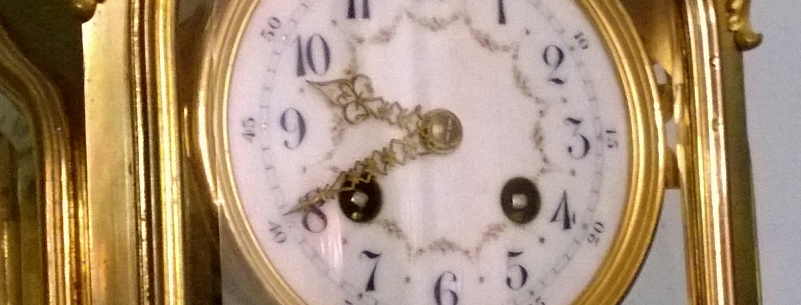
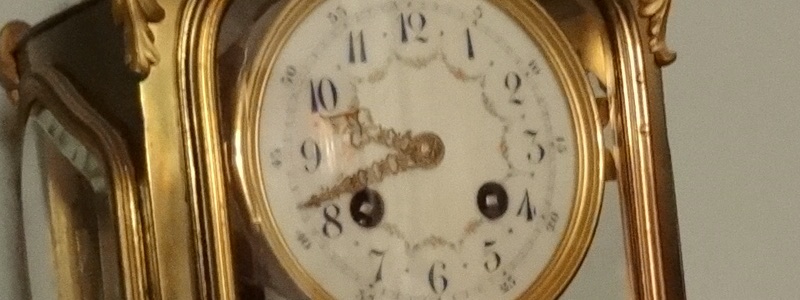


(original image JPGs: Lumia 1020, QX-10, 1020 zoomed QX-10 zoomed (18MP))
The crops above demonstrate the overall superiority of the Nokia Lumia 1020 and the PureView system in this sort of indoors, low light situation. Even leaving flash aside (since that wouldn't have been fair to the QX-10), the PureView oversampling, allied to the Optical Image Stabilisation, mean that far more light gets to hit the sensor and more reliably. Shutter time is longer, aperture is wider, plus there's no blur from the user's motion.
Even when zoomed in, i.e. ruling out the oversampling, the OIS means more light, crisper photos, less noise and overall far better results.
Test 6: Low light, noise and stabilisation test
My standard test in ultra low light, this time with a little dawn light in the sky (though, as ever, the 1020's overview below flatters hugely in the light level - it was really quite dark!) Still a great test that challenges every smartphone camera:

Here are 1:1 crops of the 1020's and the QX-10's default renderings of the scene, in a comparator (please wait for the images and code to load if you're on a slow connection):

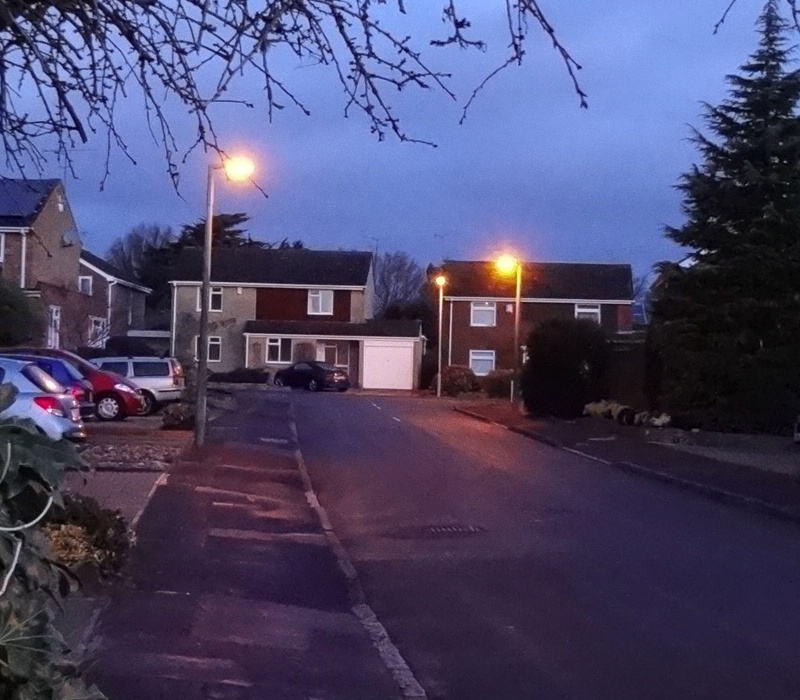
(original image JPGs: Lumia 1020, QX-10)
The Lumia 1020's image is better in every metric, though the QX-10 got surprisingly close, especially considering the smaller sensor and lack of OIS - how on earth did I manage to hold the accessory so still?) Yet again there's a harshness and a slight colour cast in the Sony version of the scene, which is slightly offputting. (And apologies that the QX-10 photo is slightly skewed - not every test photo can be perfectly level - I'm only human!)
Verdict
The camera in the Lumia 1020 - and, to a lesser degree, in other modern smartphones, is an integral part of the functionality, always ready at a second's notice and with zero hassle. In the 1020's case, you get stellar results in almost all use cases, especially with the recent Black update improvements. But you can see the temptation for lesser devices, to keep an accessory like the QX-10 in a pocket ready for strapping on and hooking up, to capture that 'special scene'.
And, as you can see above, the QX-10 is at least competitive with 1020 quality on the whole, dragging behind with the light gets low and leaping ahead when light is good and zoom is needed. The output resolutions (and, yes, I had latest firmware on it) are somewhat odd in that no one's going to happy with 2MP in 16:9 mode, forcing everyone into 4:3, which seems peculiar in 2014. I'd expect this to be fixed in future firmware (flashing this has to be done via a Windows PC). Having full (e.g. 18MP) resolution available is something of a red herring, since I didn't see any benefit in terms of captured detail - better to go for the crisp 5MP version as I (mainly) did here.
Unfortunately, the aforementioned 'special scene' aspect is really the only use case for this sort of accessory. For a sunset or waterfall or flower or (perhaps) posed group of people, you probably do have time to turn the QX-10 on, to tap its top to the smartphone (NFC), to wait for the PlayMemories application to launch, to patiently wait for a good focus and then to wait again while the photo is brought across (in 5MP form, usually) into the phone's memory.
For a great many use cases though, you probably won't have the luxury of the 30 seconds or so needed and your subject will have changed or moved or lost interest. Add in the need for flash, when shooting people in the evenings or indoors, and the QX-10 would leave the owner caught short again.
The Sony QX-10 is certainly an interesting piece of technology (and I'll be getting my hands on its 'pro' stablemate, the QX-100 soon, for comparison with the 1020) - and may even save the day for people with generic Android phones or iPhones. But Lumia 1020 owners will still be the ones getting better shots more quickly in most situations.
PS. Would I be interested in seeing how the QX-10 performs when coupled to a Windows Phone device like the 1320 or 625? Absolutely. But we're still waiting for official driver/app support from Sony.

